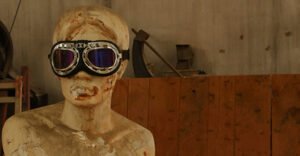A Century of Villainous Eyewear in Movies, from Monocles to VR Goggles
In the introduction of a bad guy, there’s everything you need to know about calculated intimidation. The dark, ominous music, the brooding lair and — almost always this last one: a signature piece of eyewear. Across the centuries of cinematic evil, eyewear has evolved from a minor accessory to an important thematic device that reflects our understanding of wrongdoing.
The Monocle: Arrogance Redoubled
Back when movies were not in short supply, the monocle was king of all villain identifiers. It is a certain vice, or pretensions to intellectual elitism bequeathed by the monocle of Dr Mabuseion — Fritz Lang’s cinematic criminal mastermind from his silent film. This, combined with the monocle’s connotations of wealth and aristocracy went about making it a semiotic icon for chilling detachment and malicious authority.
Veils of Evil: villainous eyewear in movies Dark glasses & the Invention of Cool
As the era of film noir gave way, sunglasses picked up where arch-criminals left off. They were so dark they almost obscured the eyes — windows to that soul, immediately shrouded in mystery and general untrustworthiness. Yes, Jack Palance’s snazzy shades in “Shane” and Robert Mitchum wayfarers’ in “Night of the Hunter”: They were more than just fashion statement; they signaled a move to bad guys with deeper layers who operated without explaining themselves.
A Peek Inside The Eye Patch Of Terror And Darkness

The eye patch, with its notorious connection to pirates and swashbucklers, gained an air of larceny in cinema. From the cold calculation of Hannibal Lecter in Silence of the Lambs to Governor Swan’s outpouring fury in Pirates of the Caribbean, it is obvious that an eye patch can communicate either deeply suppressed trauma or furious brutality. This modest article of clothing would become a kind of pictograph for obsidian days past, a promise that something sinister lurks just beneath the surface.
Digital Age: VR Goggles and Evil Without Humanity
Enter into the digital age, villainous eyewear. What used to be the icon of next-level escapism has now become emblematic of a cold distance from reality. Characters such as Ready Player One’s Oculus and the mask-wearing figures of V for Vendetta are technologically enabled puppeteers, obscured from view but with a cold gaze bent on reordering the world to their nefarious designs.
A Closer Look: Glasses as Reflections
A compelling timeline emerges in villainous eyewear, a lineage tracking fears of the time and an outward expression thereof. Now the monocle – once a sign of elite privilege — seems quaint in an era when global brands and technology overlords don’t pit one social class against another but set such supralocal standards that they remind us how irrelevant old hierarchies now are. In the same way that sunglasses bring an iciness to human expression, masks and digital interfaces now afford a chilling invisibility instead. Next time the villain steps onto your TV screen, pay close attention to what kind of glasses they are sporting; it could tell you more than visual cues.
Learn More : Tech-Free Weekends: A Guide to Recharge and Unplug




